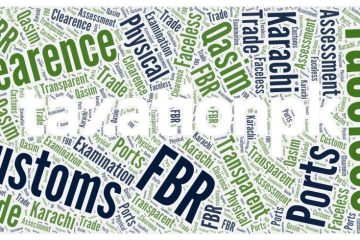As a business owner, it is important to understand the concept of set off and carry forward of losses to make informed decisions for your business’s financial health. In Pakistan, the Income Tax Ordinance 2001 allows for the adjustment of losses against future income/revenue. This article will provide a comprehensive guide on set off and carry forward of losses in Pakistan, covering the types of losses, timeframes, and important considerations for businesses.
Types of Losses
In Pakistan, there are two types of business losses: losses from business transactions and losses due to depreciable allowances or depreciation or amortization. Losses from business transactions refer to expenses incurred by a business that exceed the revenue generated in a financial year. Losses due to depreciable allowances or depreciation or amortization, on the other hand, refer to the decrease in the value of an asset over time.
Set Off of Losses
Set off of losses is the deduction of allowable expenses or business loss from the gross revenue. This is done to calculate the taxable income for a business. In income tax, there is a provision that allows for the set off of losses against future income/revenue. This means that if a business incurs a loss in one year, it can be adjusted against the income/revenue from the next years. The time frame up to which such losses can be adjusted is six years as per the Income Tax Ordinance 2001.
Carry Forward of Losses
Carry forward of losses is the process of transferring unadjusted losses to future years. In Pakistan, there are three types of carry forward of losses. The first type is unlimited carry forward, which is only allowed in cases of unabsorbed depreciation or amortization. This means that the loss can be carried forward until it is fully adjusted.
The second type of carry forward of losses is allowed for other types of business losses and can be carried forward up to six following years. After the expiry of six years, the loss from year one becomes a ‘dead loss’ and cannot be adjusted in the future.
Important Considerations for Businesses
When it comes to set off and carry forward of losses, there are several important considerations that businesses in Pakistan should keep in mind. Firstly, it is important to maintain accurate records of all business transactions and expenses. This will help in calculating the exact amount of loss that can be set off or carried forward.
Secondly, businesses should ensure that they are claiming all allowable expenses as deductions. This will help in reducing the tax liability and maximizing the benefit of set off and carry forward of losses.
Thirdly, businesses should be aware of the time frame up to which losses can be carried forward. It is important to plan ahead and utilize the losses within the given timeframe to avoid losing out on potential tax benefits.
Fourthly, it is important to consult a tax professional or accountant to ensure that all tax laws and regulations are being followed correctly. This will help in avoiding any legal issues or penalties related to taxation.
Conclusion
In conclusion, set off and carry forward of losses is an important concept for businesses in Pakistan to understand. The ability to set off losses against future income/revenue and carry forward losses can provide significant tax benefits for businesses. It is important to maintain accurate records, claim all allowable deductions, and consult tax professionals to maximize the benefit of set off and carry forward of losses. By keeping these considerations in mind, businesses can make informed decisions for their financial health and growth.






